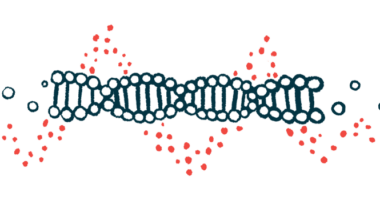1 in 4 with ATTR amyloidosis have neurological and heart symptoms
15-year data from global study aim to improve understanding of diseases

New 15-year data from a global study involving more than 6,000 people with ATTR amyloidosis, an umbrella term for conditions that include familial amyloid polyneuropathy (FAP), found that nearly 1 in 4 patients experience both neurological and cardiac symptoms, showing the need, according to researchers, for improved multidisciplinary disease management.
Over the course, to date, of the THAOS (NCT00628745) observational study, researchers have looked at the clinical outcomes of a large number of patients to better understand the natural history of this group of diseases, which are characterized by fibrous protein deposits in the body.
Overall, the findings have highlighted the varied nature of these diseases, which can be marked by mixed symptoms and involve multiple bodily systems. They’ve also helped grow understanding of ATTR amyloidosis, the scientists noted. The team hopes these data now may be used to raise awareness about diagnosis, to inform and educate doctors about how to best care for people with these diseases, and to develop new treatment guidelines.
“Diagnosing ATTR amyloidosis can be difficult due to low disease awareness,” among other factors, the researchers noted, adding that “better clinical characterization of the disease may lead to earlier identification and intervention, which is associated with improved outcomes.”
The study, “A 15-year consolidated overview of data in over 6000 patients from the Transthyretin Amyloidosis Outcomes Survey (THAOS),” was published in the Orphanet Journal of Rare Diseases. It was funded by Pfizer, which is developing Vyndaqel (tafamidis) as a treatment for FAP, a rare inherited disease form.
Mainly neurological symptoms for nearly 40%, cardiac symptoms for over 30%
Transthyretin amyloidosis, also called ATTR amyloidosis, refers to any disease marked by a buildup of amyloid fibrils, or fibrous deposits, made up of unstable transthyretin protein in the body’s tissues and organs.
There are two main types of ATTR amyloidosis. The so-called wild-type develops with age, and amyloid fibrils mainly build up in the heart. Hereditary ATTR amyloidosis, meanwhile, is caused by a mutation that’s inherited, meaning it runs in a family.
Depending on the disease-causing mutation, hereditary ATTR amyloidosis can present neurological symptoms, cardiac symptoms, or a combination of both. FAP is a form of hereditary ATTR amyloidosis that mainly causes nerve damage outside the brain and spinal cord.
To better understand the natural history of ATTR amyloidosis, the researchers drew on data spanning 2007 to 2022 from a total of 6,368 patients in 23 countries. Among them, 4,428 were symptomatic, meaning they had symptoms, and 1,707 were asymptomatic, or had no symptoms.
Mixed phenotype [manifest symptoms] and multisystemic involvement are increasingly recognized, highlighting the need for a consistent, multidisciplinary approach to the management of ATTR amyloidosis.
A total of 38.7% of symptomatic patients had predominantly neurological symptoms, while 31.9% had predominantly cardiac symptoms. About one quarter (24.5%) had a combination of both. In a small proportion of patients (4.9%), the predominant type of symptoms was unknown.
“Mixed phenotype [manifest symptoms] and multisystemic involvement are increasingly recognized, highlighting the need for a consistent, multidisciplinary approach to the management of ATTR amyloidosis,” the researchers wrote.
Most symptomatic patients in Asia (47.8%), Europe (54.2%), and South America (79.5%) carried the Val30Met mutation, the most common mutation known to cause FAP. The majority of these patients in each of these regions had early-onset disease. In North America, most symptomatic patients had wild-type ATTR amyloidosis.
The patients’ mean age at the onset of symptoms was 56.6, and was higher for wild-type than for hereditary ATTR amyloidosis.
Mutations other than Val30Met seen in most patients in North America
Among the 1,712 patients with predominantly neurological symptoms, those in North America mainly carried a mutation other than Val30Met. In Asia, Europe, and South America, however, the Val30Met mutation — early or late-onset — was most common.
Individuals carrying a mutation other than Val30Met accounted for more than half of those with predominantly cardiac symptoms in Asia (55.3%) and South America (52.6%) and for the vast majority in North America (90.2%).
The most common symptoms were cardiac symptoms (55.4%), followed by sensory neuropathy or loss of sensation (54.6%), and autonomic neuropathy or loss of control of involuntary bodily functions such as heart rate or blood pressure (45.1%).
Neurological impairment was most pronounced in people with the V30M mutation, particularly in those with late-onset disease. Conversely, cardiac symptoms were more evident in people with wild-type ATTR amyloidosis.
Heart failure, which occurs when the heart muscle doesn’t pump blood as well as it should, was more frequent in wild-type ATTR amyloidosis with predominantly cardiac symptoms or a combination of neurological and cardiac symptoms.
There was a higher proportion of women (58.5%) among asymptomatic patients, but not among symptomatic individuals. At enrollment in the study, the patients’ mean age was 41.9; generally, ages were higher for patients who carried a mutation other than Val30Met compared with those who carried that mutation.
“THAOS has notable strengths in that the registry represents a large, geographically diverse group of countries and study sites worldwide, and provides a more accurate global picture of the current state of ATTR amyloidosis,” the researchers wrote.
A limitation, according to the team, was a referral bias that “may have impacted phenotype categorization.” Specifically, the scientists noted that “cardiac centers may not conduct comprehensive neurologic assessments and vice versa. This could have resulted in an under-representation of the mixed phenotype.”








